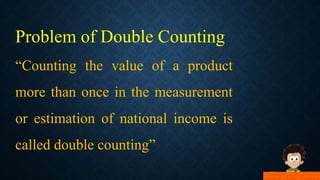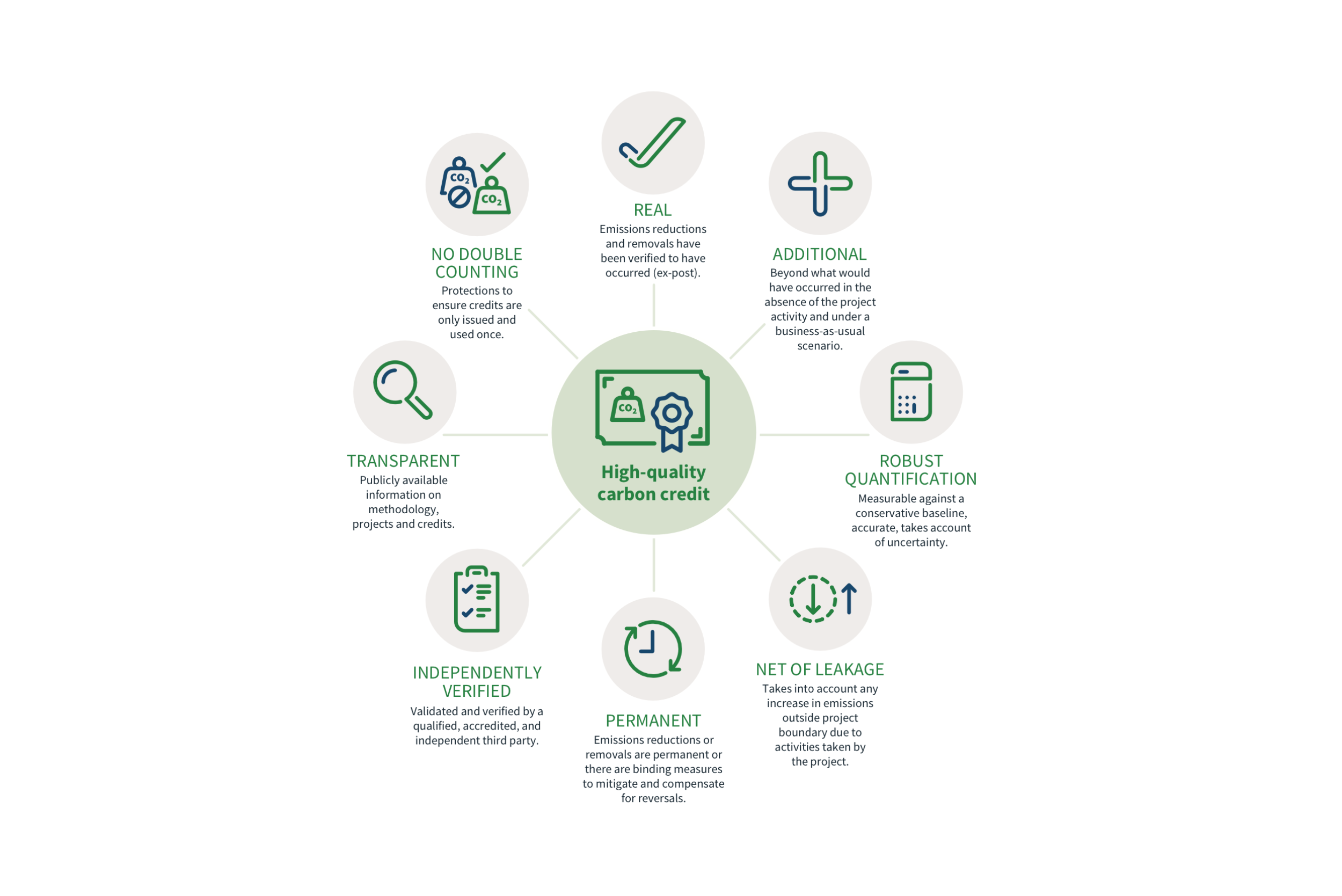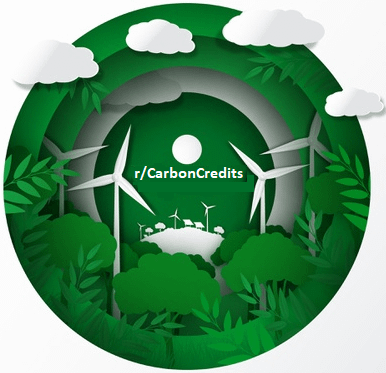Voluntary Carbon Markets (VCMs) play a crucial role in global efforts to combat climate change by enabling organizations to offset their emissions through carbon credits. However, the integrity of these markets is increasingly under scrutiny due to the risk of double counting—a scenario where a single emission reduction is claimed by multiple parties. This issue undermines the credibility of VCMs and threatens their effectiveness in driving real climate action. As demand for carbon credits grows, understanding the prevalence and mechanisms of double counting becomes essential. This article explores the risks associated with double counting within VCMs, its potential impact, and strategies to mitigate this critical challenge.

- Double Counting Issues Within VCMs: How High Is the Risk?
- What is double counting in VCM?
- What is the double counting issue?
- What is the Double Counting Issue?
- How Does Double Counting Affect GDP Calculations?
- Why is Double Counting a Problem in Carbon Accounting?
- How Does Double Counting Impact Supply Chain Management?
- What Are the Consequences of Double Counting in Financial Reporting?
- How Can Double Counting Be Prevented?
- What is double counting in carbon markets?
- What makes a carbon credit high quality?
- Frequently Asked Questions (FAQ)
Double Counting Issues Within VCMs: How High Is the Risk?
Double counting within Voluntary Carbon Markets (VCMs) is a significant concern that undermines the integrity and effectiveness of carbon offset projects. It occurs when a single carbon credit is claimed by multiple entities, leading to an overestimation of emissions reductions. This issue arises due to lack of transparency, weak regulatory frameworks, and inadequate tracking systems. The risk of double counting is particularly high in cross-border projects or when multiple registries are involved. Addressing this challenge is crucial to ensure the credibility of VCMs and to achieve global climate goals.
What Is Double Counting in VCMs?
Double counting refers to the situation where the same carbon credit is counted more than once toward emissions reduction targets. This can happen at different levels, such as national inventories, corporate claims, or project-level reporting. For example, if a carbon credit generated by a reforestation project in one country is sold to a company in another country, both nations might claim the emissions reduction, leading to double counting. This undermines the environmental integrity of carbon markets and reduces trust among stakeholders.
See Also Recommendations for Classes, Certificates, Courses RE: Carbon Broker and Carbon Auditor
Recommendations for Classes, Certificates, Courses RE: Carbon Broker and Carbon AuditorWhy Is Double Counting a Problem?
Double counting poses several risks to the credibility and effectiveness of VCMs. It can lead to overstated emissions reductions, making it difficult to achieve global climate targets. Additionally, it creates financial risks for investors and companies relying on carbon credits to meet their sustainability goals. If double counting becomes widespread, it could erode trust in carbon markets, discouraging participation and investment. This issue also raises ethical concerns, as it allows entities to claim environmental benefits without delivering real impact.
How Does Double Counting Occur?
Double counting can occur through various mechanisms, including:
- Lack of coordination between national and international carbon accounting systems.
- Overlapping claims by multiple stakeholders, such as project developers, buyers, and governments.
- Inadequate tracking systems that fail to ensure the uniqueness of carbon credits.
- Cross-border transactions where credits are counted in both the host and buyer countries.
What Are the Current Solutions to Prevent Double Counting?
Several measures are being implemented to address double counting, including:
- Robust tracking systems like blockchain technology to ensure transparency and traceability.
- Harmonized accounting rules across jurisdictions to avoid overlapping claims.
- Third-party verification to validate the authenticity of carbon credits.
- Clear attribution rules to determine who can claim the emissions reduction.
 I've Just Completed a Video on Carbon Credits for My Decarbonize! Channel That I Thought This Group Would Appreciate.
I've Just Completed a Video on Carbon Credits for My Decarbonize! Channel That I Thought This Group Would Appreciate.What Are the Challenges in Eliminating Double Counting?
Despite efforts to mitigate double counting, several challenges remain:
- Fragmented regulatory frameworks across countries and regions.
- Limited resources for monitoring and enforcement.
- Complexity of cross-border transactions involving multiple stakeholders.
- Resistance to change from entities benefiting from lax accounting practices.
| Key Issue | Description |
|---|---|
| Double Counting | Same carbon credit claimed by multiple entities. |
| Risk Factors | Lack of transparency, weak regulations, inadequate tracking. |
| Impact | Overstated emissions reductions, financial and ethical risks. |
| Solutions | Tracking systems, harmonized rules, third-party verification. |
| Challenges | Fragmented frameworks, limited resources, complexity. |
What is double counting in VCM?

What is Double Counting in the Voluntary Carbon Market (VCM)?
Double counting in the Voluntary Carbon Market (VCM) refers to the situation where a single carbon credit is claimed by more than one entity or used for multiple purposes. This undermines the integrity of carbon markets by inflating the apparent impact of emissions reductions. For example, if a carbon credit is sold to a company and also counted toward a country's national emissions reduction targets, it creates a discrepancy in accountability.
See Also Cambodian Offset Project Led to Arrests, Evictions of Indigenous People, Report Alleges
Cambodian Offset Project Led to Arrests, Evictions of Indigenous People, Report AllegesHow Does Double Counting Occur in VCM?
Double counting can happen in several ways:
- Overlapping Claims: When both a company and a government claim the same carbon credit for their emissions reduction efforts.
- Lack of Transparency: Insufficient tracking systems or registries can lead to credits being counted more than once.
- Cross-Border Projects: When a project in one country generates credits that are sold internationally, both the host country and the buyer may attempt to claim the reduction.
Why is Double Counting a Problem in VCM?
Double counting poses significant challenges to the credibility of the VCM:
- Undermines Trust: It erodes confidence in carbon markets, making it harder for buyers to trust the legitimacy of credits.
- Reduces Impact: It dilutes the actual environmental impact of carbon reduction efforts, as the same credit is counted multiple times.
- Regulatory Risks: It can lead to non-compliance with international climate agreements, such as the Paris Agreement.
How Can Double Counting Be Prevented in VCM?
Preventing double counting requires robust systems and collaboration:
- Centralized Registries: Implementing centralized and transparent registries to track carbon credits.
- Clear Ownership Rules: Establishing clear guidelines on who can claim the benefits of a carbon credit.
- International Standards: Adopting global standards, such as those from the International Carbon Reduction and Offset Alliance (ICROA), to ensure consistency.
What Are the Consequences of Double Counting in VCM?
The consequences of double counting are far-reaching:
- Market Distortion: It distorts the true value of carbon credits, leading to inefficiencies in the market.
- Environmental Harm: It can result in fewer actual emissions reductions, harming global climate goals.
- Legal Implications: Companies and governments may face legal challenges if double counting is discovered.
What is the double counting issue?

What is the Double Counting Issue?
The double counting issue refers to a situation where the same economic activity or financial transaction is counted more than once in calculations, leading to inaccurate results. This problem often arises in areas like GDP calculations, carbon accounting, or supply chain management, where overlapping data or improper tracking can cause errors. Double counting can distort economic analyses, mislead decision-making, and create inefficiencies in resource allocation.
How Does Double Counting Affect GDP Calculations?
In GDP calculations, double counting occurs when intermediate goods are counted alongside final goods, inflating the total output. For example:
- Intermediate goods, like raw materials, are used to produce final goods.
- If both are counted separately, the GDP appears larger than it actually is.
- This issue is avoided by using the value-added method, which only counts the additional value at each production stage.
Why is Double Counting a Problem in Carbon Accounting?
In carbon accounting, double counting happens when emissions reductions are claimed by multiple parties, leading to inaccurate climate progress reports. Key points include:
- Emissions reductions might be counted by both the buyer and seller in carbon credit transactions.
- This undermines the integrity of climate agreements and carbon markets.
- Proper tracking systems and transparency are essential to prevent this issue.
How Does Double Counting Impact Supply Chain Management?
In supply chain management, double counting can lead to inefficiencies and errors in inventory tracking. For instance:
- The same product might be recorded in multiple locations or systems.
- This can cause overstocking, understocking, or financial discrepancies.
- Implementing unified tracking systems and real-time updates can mitigate this problem.
What Are the Consequences of Double Counting in Financial Reporting?
In financial reporting, double counting can distort financial statements and mislead stakeholders. Key consequences include:
- Revenue or expenses might be recorded multiple times, inflating or deflating figures.
- This can lead to regulatory penalties and loss of investor trust.
- Using accurate accounting practices and auditing is crucial to avoid such errors.
How Can Double Counting Be Prevented?
Preventing double counting requires robust systems and practices. Effective strategies include:
- Implementing centralized databases to track transactions or activities.
- Using unique identifiers for each transaction or product.
- Regular audits and reconciliation to ensure data accuracy.
What is double counting in carbon markets?
![]()
What is Double Counting in Carbon Markets?
Double counting in carbon markets refers to the situation where a single carbon credit or emission reduction is claimed by more than one party. This undermines the integrity of carbon markets by inflating the apparent impact of carbon reduction efforts. It typically occurs when both the buyer and seller of a carbon credit, or different jurisdictions, claim the same emission reduction toward their climate goals.
- Carbon credits are tradable certificates representing a reduction of one metric ton of CO2 or equivalent greenhouse gases.
- Double counting can happen at both the project level and the national level, leading to inaccurate reporting of emissions reductions.
- This issue is particularly problematic in international carbon markets, where transparency and accountability are critical.
How Does Double Counting Occur?
Double counting can occur in several ways, often due to a lack of clear accounting rules or coordination between parties. For example, if a company in one country purchases carbon credits from a project in another country, both nations might count the same emission reduction toward their climate targets.
- Lack of standardized methodologies for tracking and reporting carbon credits.
- Overlapping claims between private entities and governments.
- Inadequate registry systems to prevent duplicate claims.
Why is Double Counting a Problem?
Double counting undermines the credibility of carbon markets and can lead to overestimation of global emission reductions. This can result in weaker climate action and a failure to meet international climate goals, such as those outlined in the Paris Agreement.
- It creates a false sense of progress in reducing emissions.
- It can discourage investment in genuine carbon reduction projects.
- It complicates international cooperation on climate change mitigation.
How Can Double Counting Be Prevented?
Preventing double counting requires robust accounting frameworks, transparent reporting systems, and international cooperation. Clear rules must be established to ensure that each carbon credit is only counted once, either by the buyer or the seller.
- Implementing centralized registries to track carbon credit transactions.
- Adopting international standards for carbon accounting.
- Ensuring third-party verification of emission reductions.
Examples of Double Counting in Practice
Double counting has been observed in various carbon markets, particularly in cases where cross-border transactions are involved. For instance, a renewable energy project in one country might sell carbon credits to a company in another country, and both nations might include the emission reductions in their national inventories.
- Renewable energy projects in developing countries selling credits to developed countries.
- Overlapping claims in voluntary carbon markets and compliance markets.
- Cases where corporate sustainability goals conflict with national climate targets.
What makes a carbon credit high quality?

What is a High-Quality Carbon Credit?
A high-quality carbon credit represents a verified and measurable reduction or removal of one metric ton of carbon dioxide (or its equivalent in other greenhouse gases) from the atmosphere. To ensure quality, the credit must meet rigorous standards, including additionality, permanence, and transparency. These factors ensure that the credit contributes to real and lasting climate benefits.
- Additionality: The project must demonstrate that the emissions reduction would not have occurred without the carbon credit incentive.
- Permanence: The carbon reduction or removal must be long-term, ensuring it is not reversed over time.
- Transparency: The project must provide clear and accessible documentation for verification and auditing.
Why is Additionality Critical for Carbon Credit Quality?
Additionality ensures that the carbon credit represents a genuine reduction in emissions that would not have happened otherwise. Without additionality, the credit may not contribute to actual climate mitigation. Projects must prove that they rely on carbon credit revenue to be financially viable.
- Baseline Scenario: The project must establish a credible baseline of emissions without the carbon credit initiative.
- Financial Dependence: The project should demonstrate that it requires carbon credit income to proceed.
- Regulatory Compliance: The project must not be mandated by existing laws or regulations.
How Does Permanence Ensure Carbon Credit Integrity?
Permanence refers to the long-term stability of the carbon reduction or removal. If the carbon is re-released into the atmosphere, the credit loses its value. Projects must implement safeguards, such as monitoring and insurance mechanisms, to ensure the carbon remains sequestered.
- Monitoring Systems: Continuous tracking of carbon storage to detect any potential reversals.
- Buffer Pools: Reserves of credits to offset any unintentional reversals.
- Insurance Mechanisms: Financial guarantees to address potential risks of carbon release.
What Role Does Transparency Play in Carbon Credit Quality?
Transparency is essential for building trust in carbon credits. It involves clear documentation, third-party verification, and public accessibility of project data. This ensures that stakeholders can verify the legitimacy and impact of the credits.
- Third-Party Verification: Independent audits to confirm the project's claims.
- Public Registries: Platforms where project details and credit issuance are publicly available.
- Regular Reporting: Frequent updates on project progress and carbon reductions.
How Do Co-Benefits Enhance Carbon Credit Quality?
High-quality carbon credits often deliver additional environmental, social, and economic benefits, known as co-benefits. These can include biodiversity conservation, community development, and improved air quality, making the credits more valuable and impactful.
- Biodiversity Conservation: Projects that protect or restore ecosystems.
- Community Development: Initiatives that create jobs or improve local infrastructure.
- Health Improvements: Reductions in air pollution leading to better public health outcomes.
Frequently Asked Questions (FAQ)
What is double counting in the context of Voluntary Carbon Markets (VCMs)?
Double counting occurs when a single carbon credit is claimed by more than one entity or country, leading to an overestimation of emission reductions. In the context of Voluntary Carbon Markets (VCMs), this issue arises when both the buyer and the seller of a carbon credit count the same emission reduction toward their climate goals. This undermines the integrity of carbon markets and can result in a lack of trust among participants. Ensuring that each credit is only counted once is critical for maintaining the credibility and effectiveness of VCMs.
How does double counting affect the credibility of carbon credits?
The credibility of carbon credits is heavily dependent on the assurance that each credit represents a unique and verifiable reduction in emissions. When double counting occurs, it dilutes the value of carbon credits, as the same emission reduction is counted multiple times. This can lead to skepticism among buyers, investors, and regulators, ultimately weakening the overall trust in Voluntary Carbon Markets (VCMs). To maintain credibility, robust accounting mechanisms and transparent reporting systems are essential to prevent double counting and ensure the integrity of carbon credits.
What are the main causes of double counting in VCMs?
The primary causes of double counting in Voluntary Carbon Markets (VCMs) include inadequate tracking systems, lack of standardized accounting practices, and overlapping claims between different jurisdictions or entities. For example, if a carbon credit is generated in one country but sold to a company in another, both parties might claim the emission reduction toward their respective climate targets. Additionally, the absence of a centralized registry or clear guidelines can exacerbate the risk of double counting. Addressing these issues requires improved coordination, transparency, and the adoption of international standards.
What measures can be taken to mitigate the risk of double counting in VCMs?
To mitigate the risk of double counting in Voluntary Carbon Markets (VCMs), several measures can be implemented. First, establishing centralized registries that track the issuance, transfer, and retirement of carbon credits can help ensure transparency and accountability. Second, adopting international accounting standards and guidelines, such as those developed by the Paris Agreement, can provide a consistent framework for reporting and verifying emission reductions. Third, enhancing collaboration between governments, private entities, and certification bodies can help align efforts and prevent overlapping claims. These steps are crucial for maintaining the integrity and effectiveness of VCMs.
Leave a Reply


Our Recommended Articles